Transcend SSD370S 512GB SSD Review
Transend's SSD370 we tested previously fell short of meeting our quality standards. But the SSD370S fixes those issues using Micron 16nm synchronous flash. Unfortunately, this model is also more expensive than its competition.
Why you can trust Tom's Hardware
Real-World Software Performance
PCMark 8 Real-World Software Performance
For details on our real-world software performance testing, please click here.
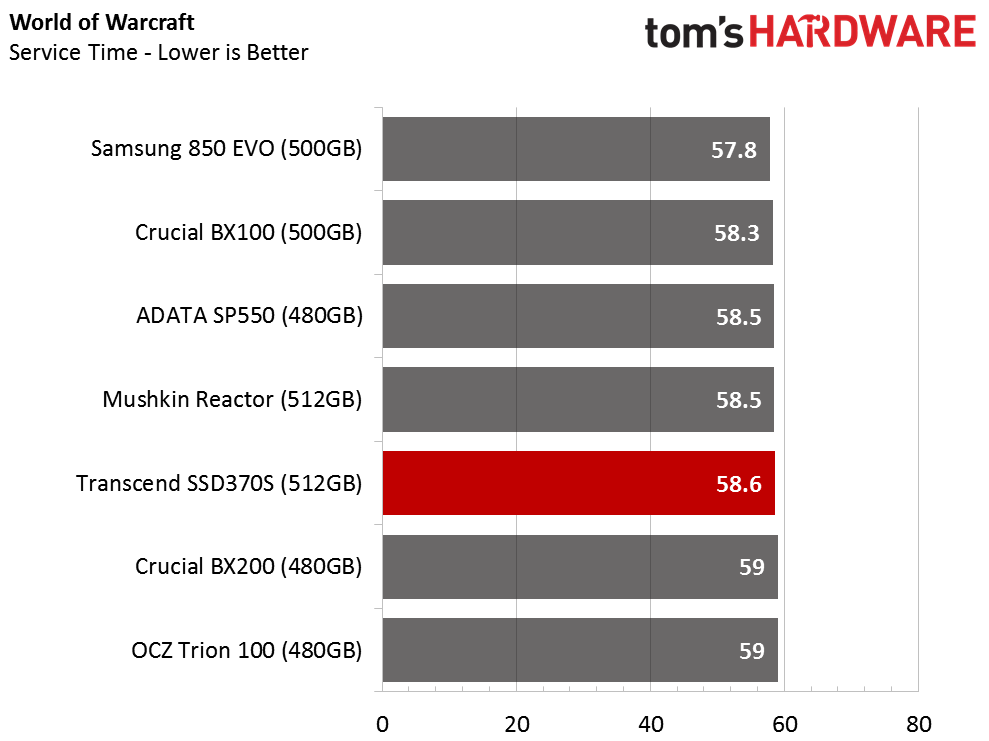
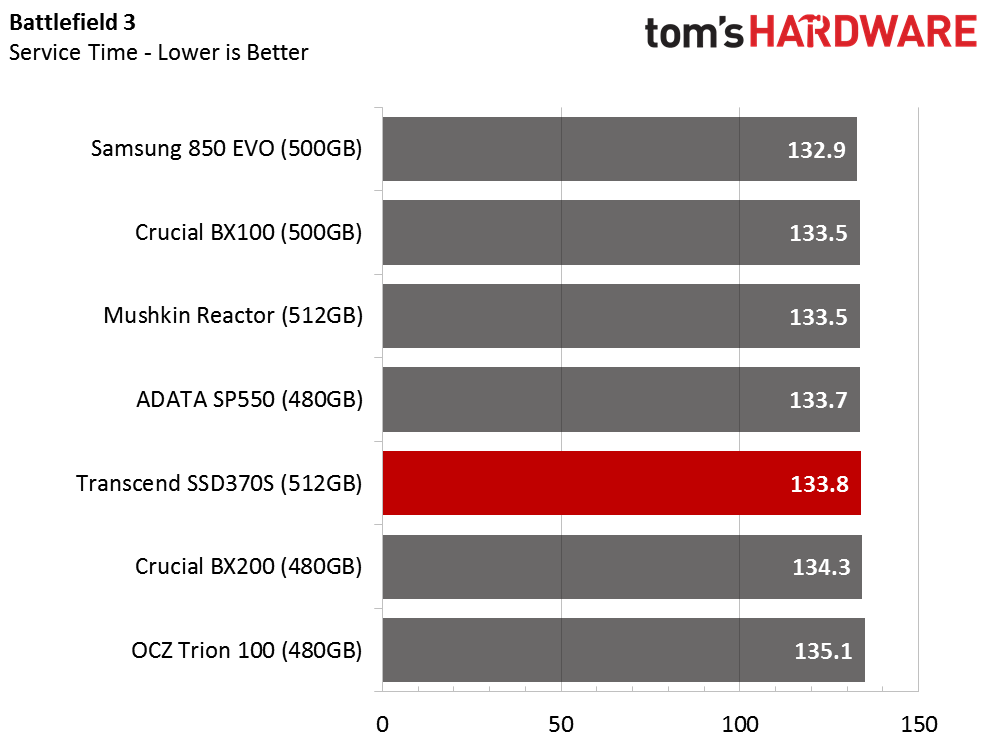
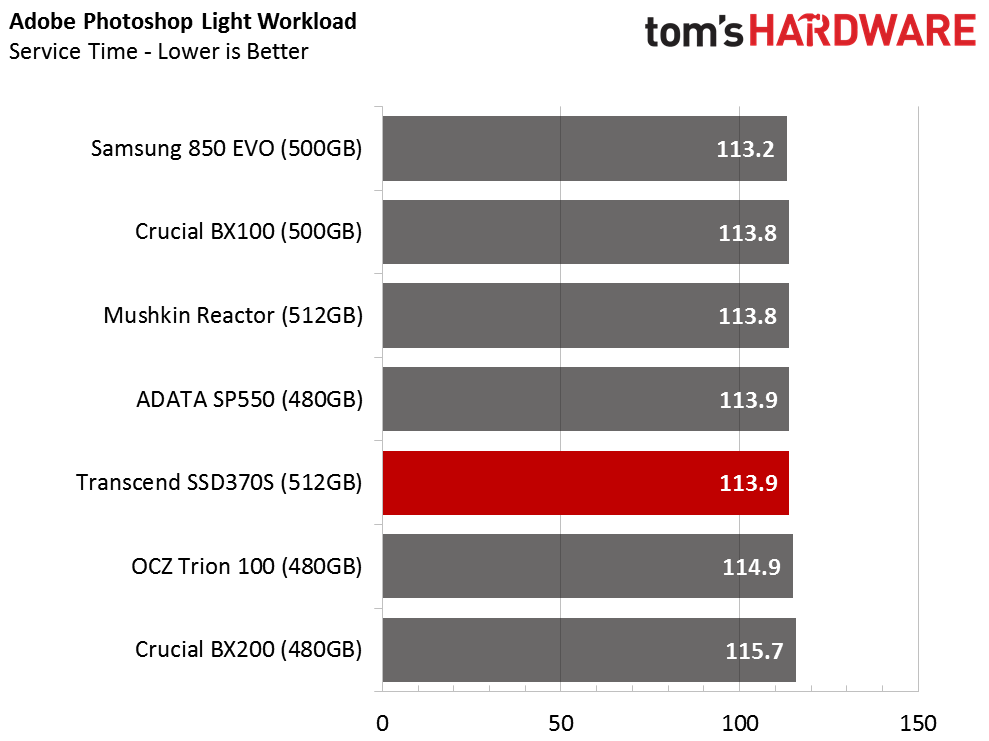
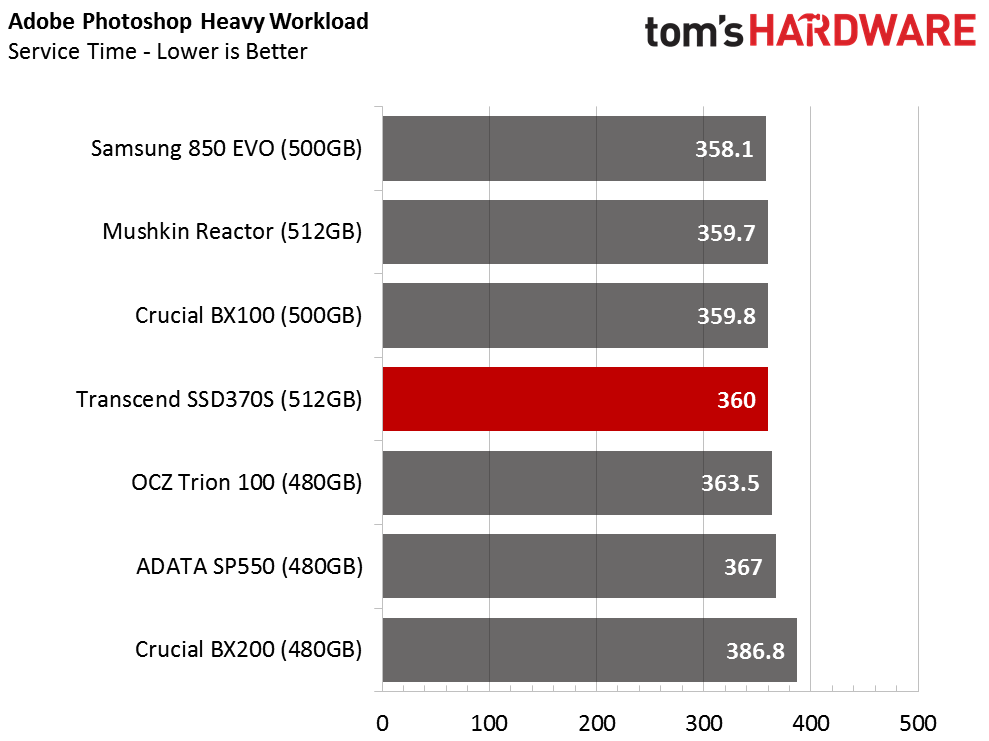
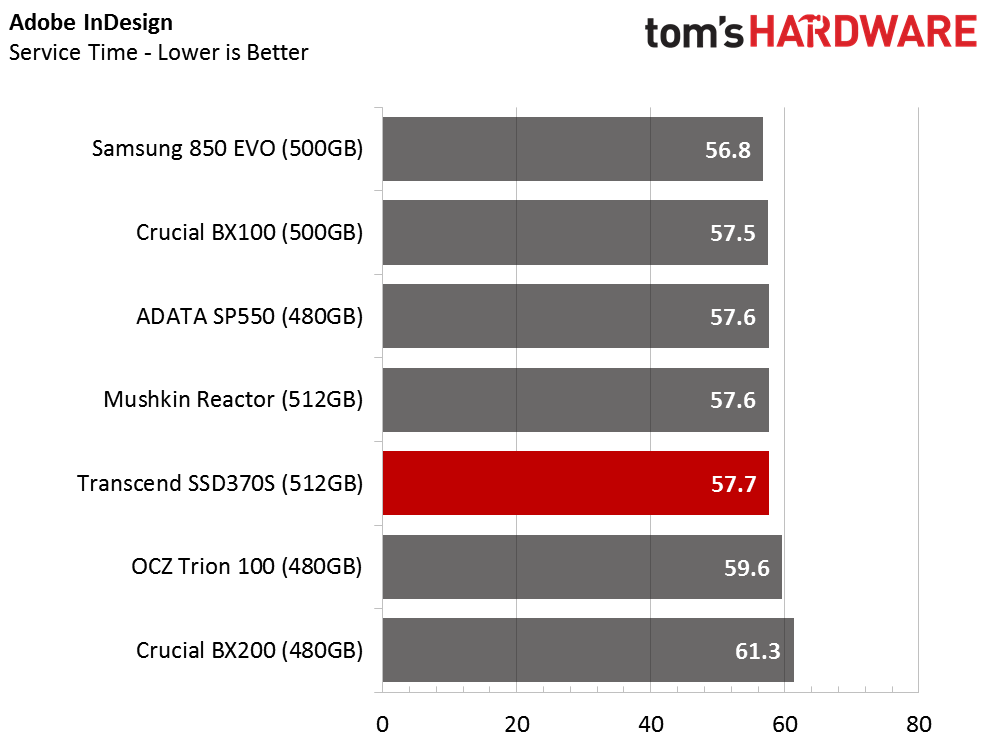
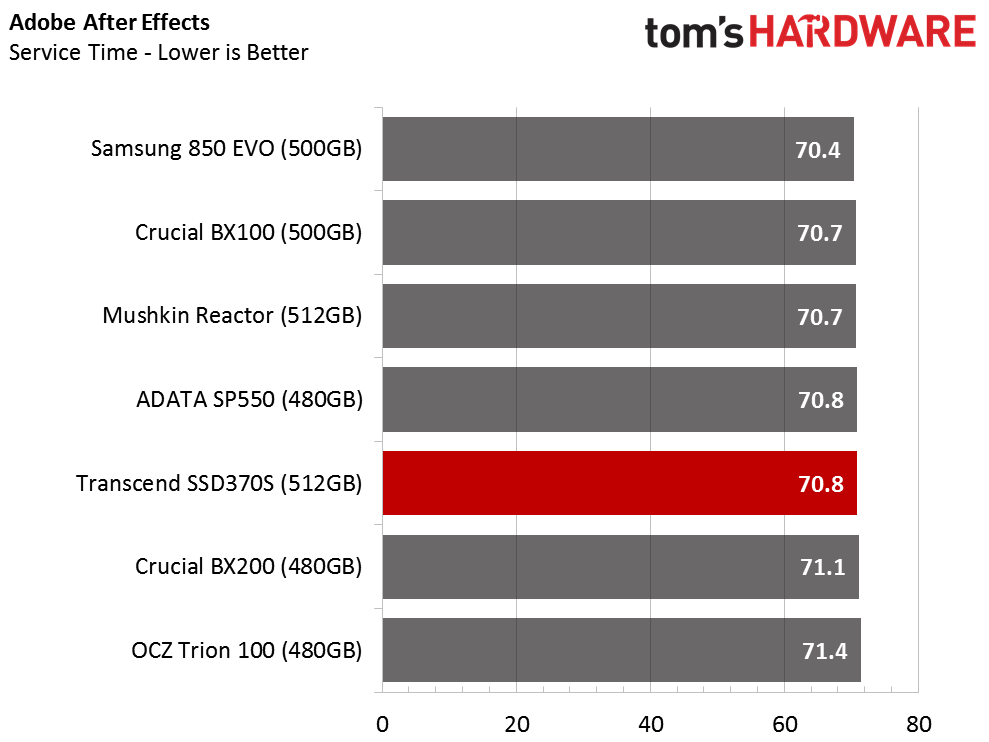


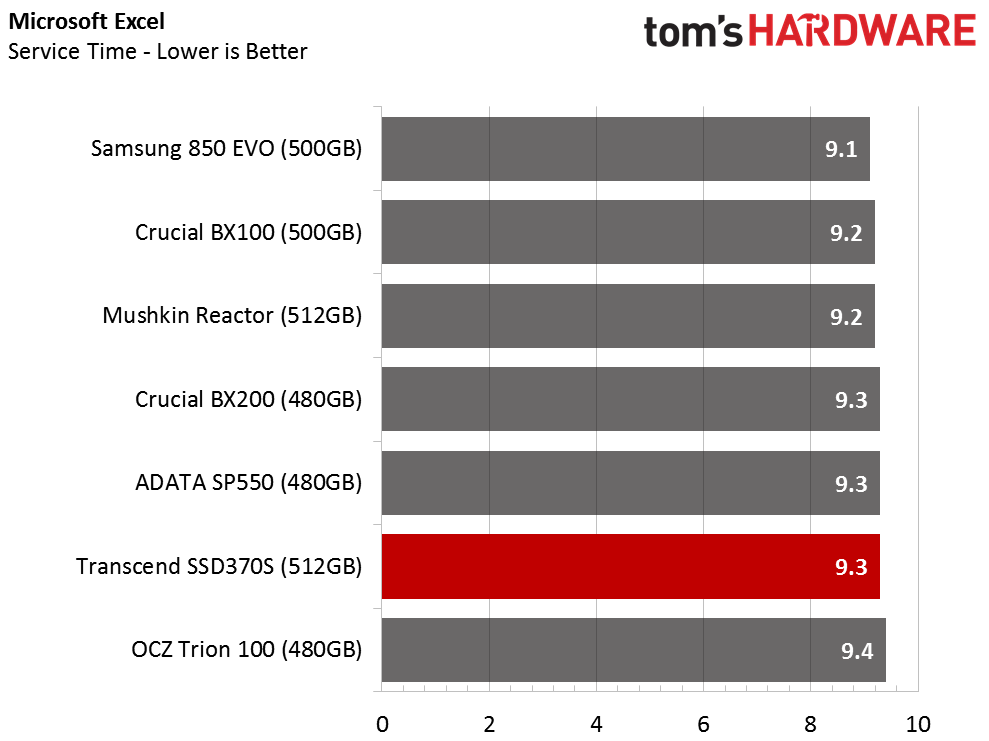

Transcend's SSD370S consistently appears toward the bottom of our charts. We expected it to deliver better performance than what we observed in our real-world software workload. At the very least, we thought it'd outmaneuver Adata's 480GB SP550, a TLC-based drive, in every test. However, the SP550 out-muscles the SSD370S in all but one benchmark.
Looking at the combined throughput results, Transcend's SSD370S barely manages to squeak past the SP550, but only because it performs better in the Photoshop-heavy test where sequential writes influence the outcome disproportionately.
PCMark 8 Advanced Workload Performance
To learn how we test advanced workload performance, please click here.
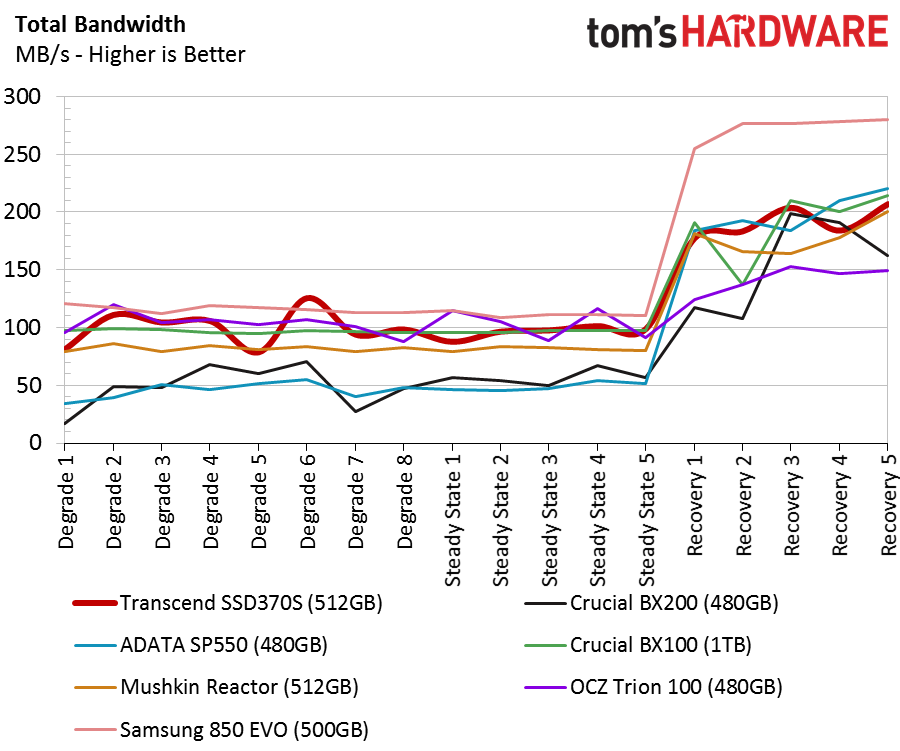
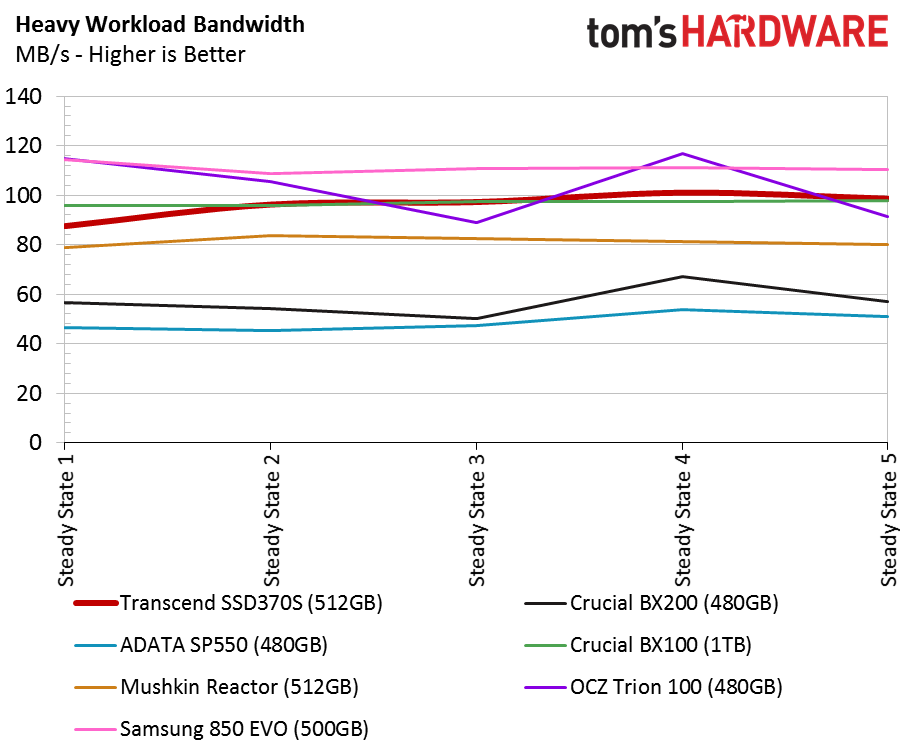
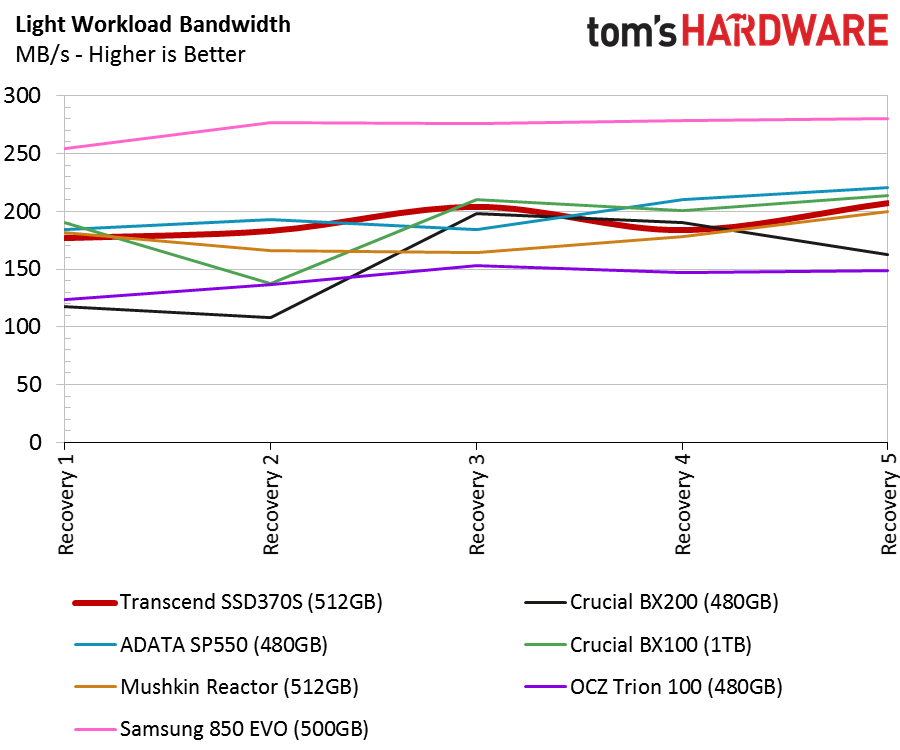
The same workloads used in the previous section are also used for our advanced workloads, where we see how heavy writes rob you of throughput. When the drives are given time to recover (via five-minute pauses between each set of tests), performance improves. Some of the drives recover faster than others. In this price range, we're only really worried about recovery performance, since it best represents the loads we'd expect value-oriented builders to apply.
The SSD370S performs well against the other drives in its class, aside from the segment's leader, of course, Samsung's 850 EVO.
Total Access Time

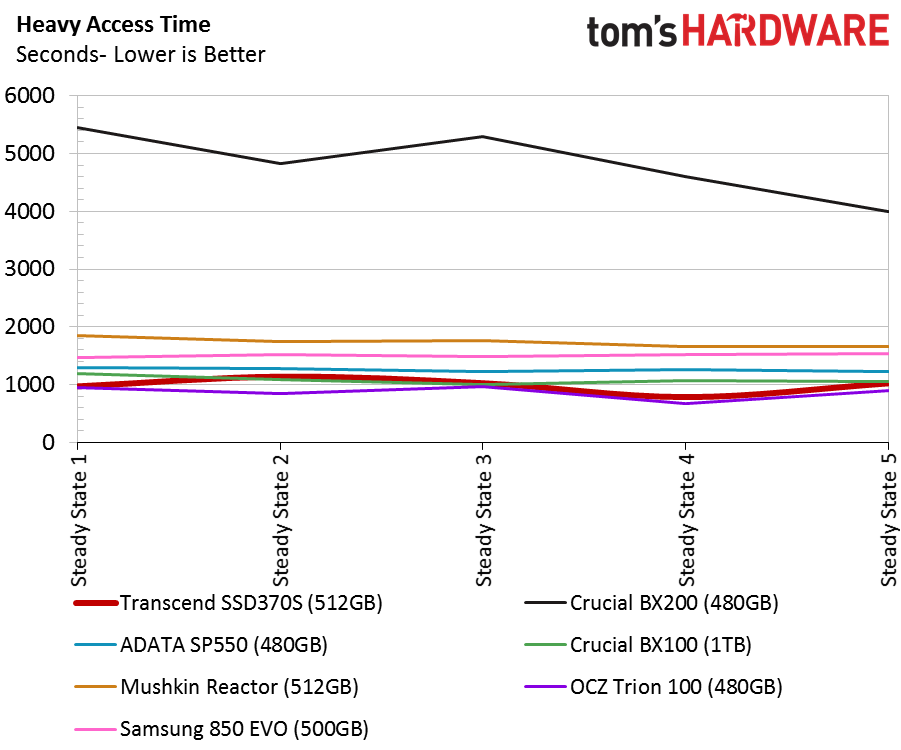
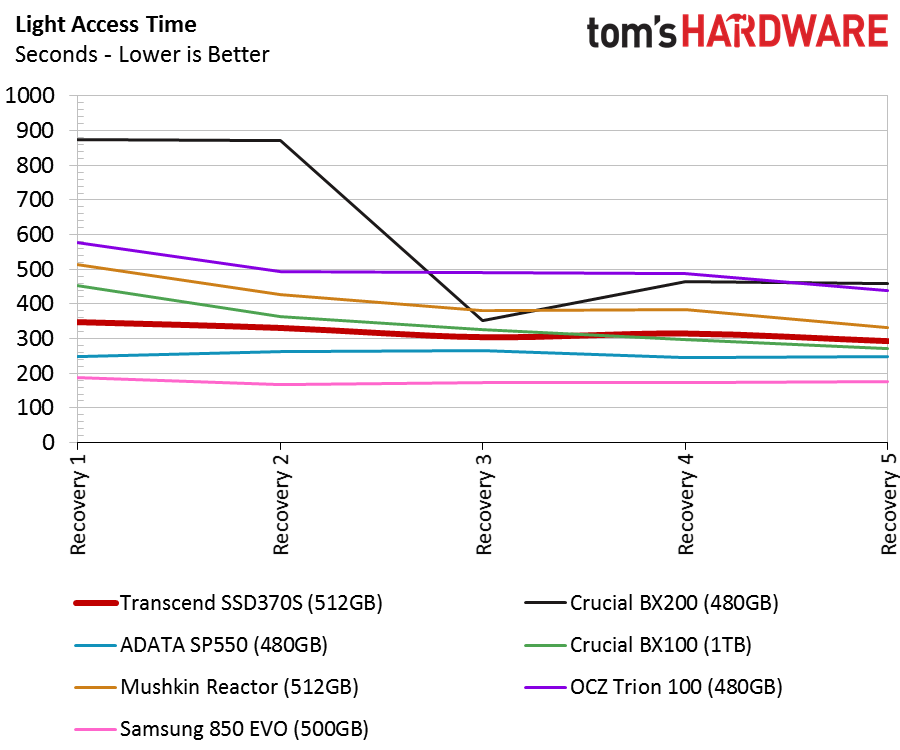
Again, we really want to focus on the recovery phase. I consider this to be the review's most important test because I spend a lot of time on my PC and require fast access times while switching among applications. The line chart really quantifies what you'll perceive as a fast storage subsystem.
Get Tom's Hardware's best news and in-depth reviews, straight to your inbox.
Notebook Battery Life
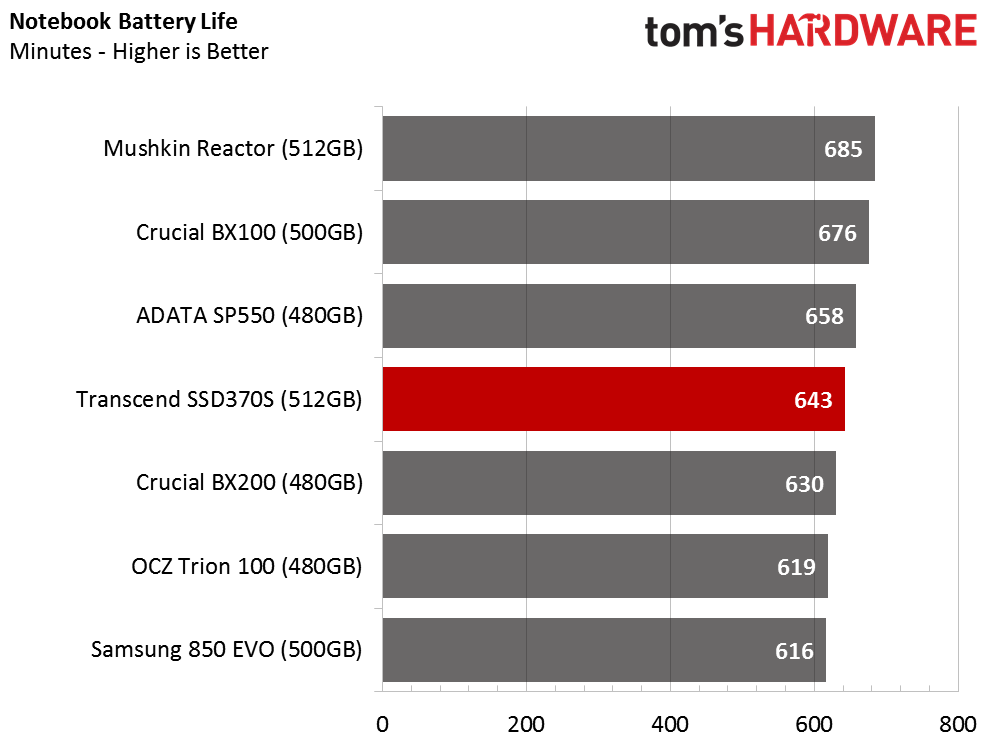
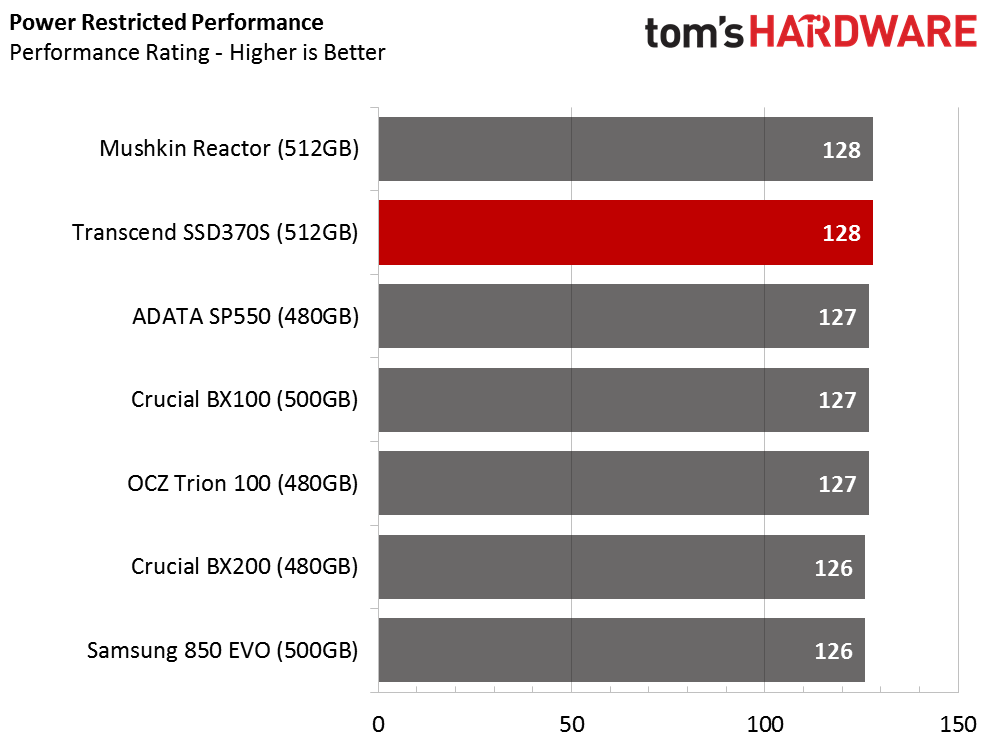
SSDs utilize a number of different power states, depending on what they're doing. After a write to the drive is completed, the controller shuffles data around to other cells. This operation can actually use more power than the original write transaction.
We measure power consumption over time, rather than taking a snapshot that'd yield unreliable results.
Firmware plays heavily into our power numbers. With the right optimizations, battery life can be extended by a large margin. This is illustrated by Crucial's BX100 and Transcend's SSD370S, which use the same controller and 16nm flash. Their DRAM caches are different, but we doubt that's the source of what we see in our chart.
Current page: Real-World Software Performance
Prev Page Mixed Workload And Steady State Next Page Conclusion
Chris Ramseyer was a senior contributing editor for Tom's Hardware. He tested and reviewed consumer storage.
-
Co BIY If the Crucial BX100 is no longer available I don't think it belongs in the performance comparison charts. Although I see the value for analyzing the trends in the market it doesn't reflect the current state and gives Crucial undeserved positive exposure for a product they can no longer even bring to market.Reply
Seems that value SSDs are one area where we are not getting continuous performance improvement but instead some backslide. -
CRamseyer The BX100 is far from an obsolete product since anyone can still purchase the series at Newegg, Amazon and a number of other online stores. I would even go as far as to say some are still on retail shelves. It is also a product that many people know and can use to compare performance against.Reply
I do agree with your comment on mainstream performance moving the wrong direction. It's a trend we will have to live with until Toshiba, Micron and SK Hynix move to 3D like Samsung. Micron appears to be the first with some 3D flash expected in June or July. 2D TLC will survive and make up the entry-level sector. 3D TLC and 3D MLC will account for the mainstream and performance sectors of the market. -
Tony37x Your pricing on the Samsung 850 EVO 500GB is very misleading - It's actually less than both of these in the article @ $149 NOT $270!!! No brainer, go with the top-rated Samsung :)Reply
http://www.amazon.com/gp/product/B00OBRE5UE/?tag=bom_tomshardware-20 -
jai_123 Do you suggest using SSD370 on a RAID 1 ? I am planning to create a RAID 1, not yet finalized to choose a OS based RAID or use a cheap HW RAID adapter.Reply -
CRamseyer With RAID 1 you don't have to worry about the Yahtzee effect. In my next RAID Report I'll explain it with some additional detail.Reply
Most SSDs will work fine in RAID 1. -
shaolin95 So for someone with a SATA II only system trying to extend the life of anotherwise powerful system, is the 850 EVO the best option?Reply
